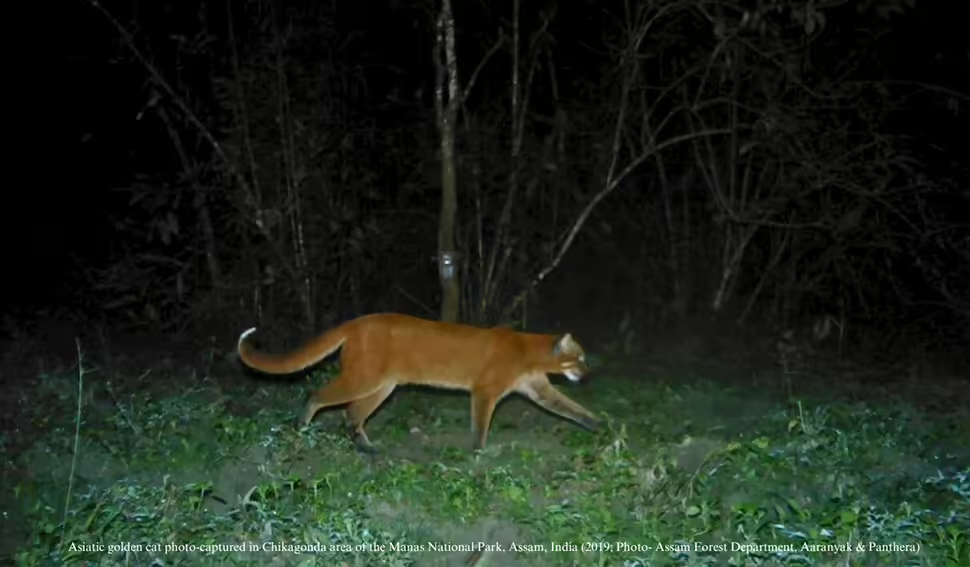Asiatic golden cat captured on camera in Assam’s Manas National Park

A collaborative team comprising officials from the Assam Forest Department, conservationists from Aaranyak and other experts from across India has reconfirmed the presence of the Asiatic golden cat (Catopuma temminckii) in Assam’s Manas National Park.
Although the species was previously expected to inhabit the region, based on a 2007 sighting, an intensive camera trapping effort spanning 39,700 trap days between 2011 and 2018 failed to record any sightings.
However, two photographic captures were successfully made in December 2019 and January 2021, following renewed camera trapping efforts led by the Assam Forest Department, Aaranyak, and Panthera. These sightings reconfirmed the presence of the elusive Asiatic golden cat in the park, following the resolution of the ethnopolitical conflict that had previously affected conservation efforts in Manas National Park.
The findings were published in the summer 2024 edition of CATNews, a journal of the IUCN SSC Cat Specialist Group, which is part of the Species Survival Commission of the International Union for Conservation of Nature (IUCN). Dr. M. Firoz Ahmed, one of the lead authors of the paper, emphasized the significance of this discovery, showcasing the value of sustained conservation efforts in the region.
The reconfirmation of the Asiatic golden cat (Catopuma temminckii) in Manas National Park was the result of extensive research involving several dedicated scientists and conservationists. Key contributors to this significant finding include Dr. M. Firoz Ahmed and Senior Conservation Biologist Dr. Dipankar Lahkar from Aaranyak, along with Amal Chandra Sarmah, Dr. Ramie H. Begum, Aprajita Singh, Nibir Medhi, Nitul Kalita, Sunit Kumar Das, and Dr. Abishek Harihar.
The Asiatic golden cat is a medium-sized wild cat species found across the northeastern Indian subcontinent, Southeast Asia, and southern China. Classified as Near Threatened on the IUCN Red List, it is also granted protection under Schedule I of India’s Wildlife (Protection) Act, 1972. This listing affords the species the highest level of legal protection in India.
Known for its adaptability, the Asiatic golden cat inhabits a wide range of ecosystems, including dry deciduous forests, subtropical evergreen forests, tropical rainforests, and temperate and sub-alpine forests. It has been observed at altitudes ranging from sea level up to 3,738 meters.
In the Northeast, the species has been documented in several key areas, including the Khangchendzonga Biosphere Reserve in Sikkim, Buxa Tiger Reserve in West Bengal, various wildlife sanctuaries and hills in Meghalaya (Nongkhyllem, Garo Hills, and Jaintia Hills), and numerous reserves across Mizoram and Arunachal Pradesh. Additionally, it has been recorded in Nagaland’s Intanki National Park and several protected areas in Bhutan.

Leave a Reply